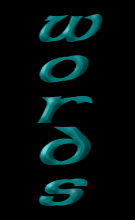July 12, 2001
Tolkien Buzz Moves Books
Kim Campbell
Moviegoers won't be able to see the big-screen version of J.R.R. Tolkien's The Lord of the Rings" until Dec. 19, but unlike all the new Star Wars episodes, they can easily find out how the story of good vs. evil turns out in advance.
Already, sales of Tolkien books are four times what they were in 1999 - with paperbacks and leatherbound volumes of The Lord of the Rings moving quickly off shelves at Barnes & Noble and previously untapped venues like Wal-Mart.
Since May, the publisher has sold 250,000 copies of a one-volume, movie tie-in version, and expects to sell all 800,000 now in print - and that's just one product.
"It's a lot of books," says Clay Harper, Houghton Mifflin's resident expert, who coordinates all the activity for Tolkien's US publisher. "This year, our Tolkien sales [dollars] are easily going into eight figures."
First introduced in the US in the mid-1950s, the three-part novel was a big seller in the 1960s and '70s - inspiring Led Zeppelin lyrics and "Gandalf for President" buttons. It has remained popular ever since, influencing scores of fantasy novels. But those who are familiar with it say that the time is right for the story to really take off.
"There are a lot of cultural things coming together at this time that are helping to propel it," says Douglas Anderson, editor of The Annotated Hobbit and author of introductions in Houghton Mifflin editions of The Lord of the Rings.
Tolkien is more in public thought, he says, attracting the attention of new and younger readers. A number of well-publicized polls in Britain recently brought it more fanfare, naming The Lord of the Rings one of the "Books of the Century." It was also a "Book of the Millennium" in a 1999 readers survey done by Amazon.com. Harry Potter fans' search for more wizardry has also helped.
And, thanks to advances in special effects, the live-action movie version is now possible - capturing the imagination of Star Wars and Internet types. A record 1.7 million people downloaded the first trailer of the Tolkien movie in the 24 hours after it appeared on the Net in April 2000 - beating the trailer for Star Wars: Episode I - The Phantom Menace.
"The real heyday, both popular and scholarly-wise, is coming. We're on the front edge of it," Mr. Anderson predicts.
It's up to Mr. Harper to keep his finger on the pulse of that interest. In a small office above downtown Boston, Harper develops the strategy for keeping the books moving before the Hollywood version either supports or sabotages public thirst.
The movie, like the book, is broken into three parts, with The Fellowship of the Ring debuting in December, and The Two Towers and The Return of the King, following in 2002 and 2003. It stars Elijah Wood as Frodo Baggins, a hobbit, and Ian McKellen as Gandalf, the wizard.
What Harper hopes is that people will sample Tolkien's vision of the story before Tinsel Town puts its stamp on it. "I worry about losing a whole generation of readers if the movie is not successful," he says.
For the uninitiated, The Lord of the Rings is about a war that breaks out over a powerful ring that can only be destroyed by returning it to the fire from which it came - and the group, including hobbits, that embarks on that mission. Its larger themes include self-sacrifice and coming of age. "It's an antiquest. It's sort of the opposite of trying to find the Holy Grail," says Harper.
Unlike Tolkien's The Hobbit, he says The Lord of the Rings is really not for younger kids. "It is a story about war, and it's not without its detailed descriptions of frightening events," he says, adding that the 1,200-page book is typically read by 13 to 25 year olds.
Knowing what happens ahead of time won't make the movie less fun, Anderson says. "There are very few people who read it once and don't read it again. Each reading opens up a new appreciation. [The film] will mainly be ... one person's interpretation."
